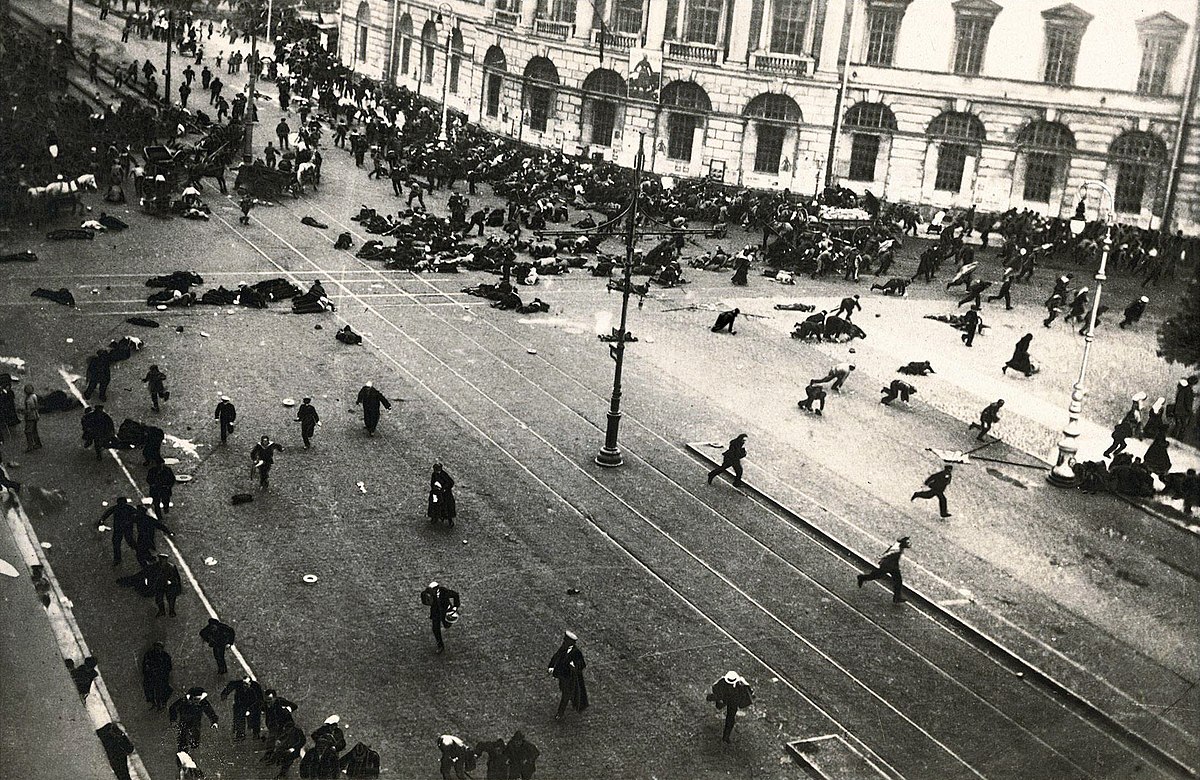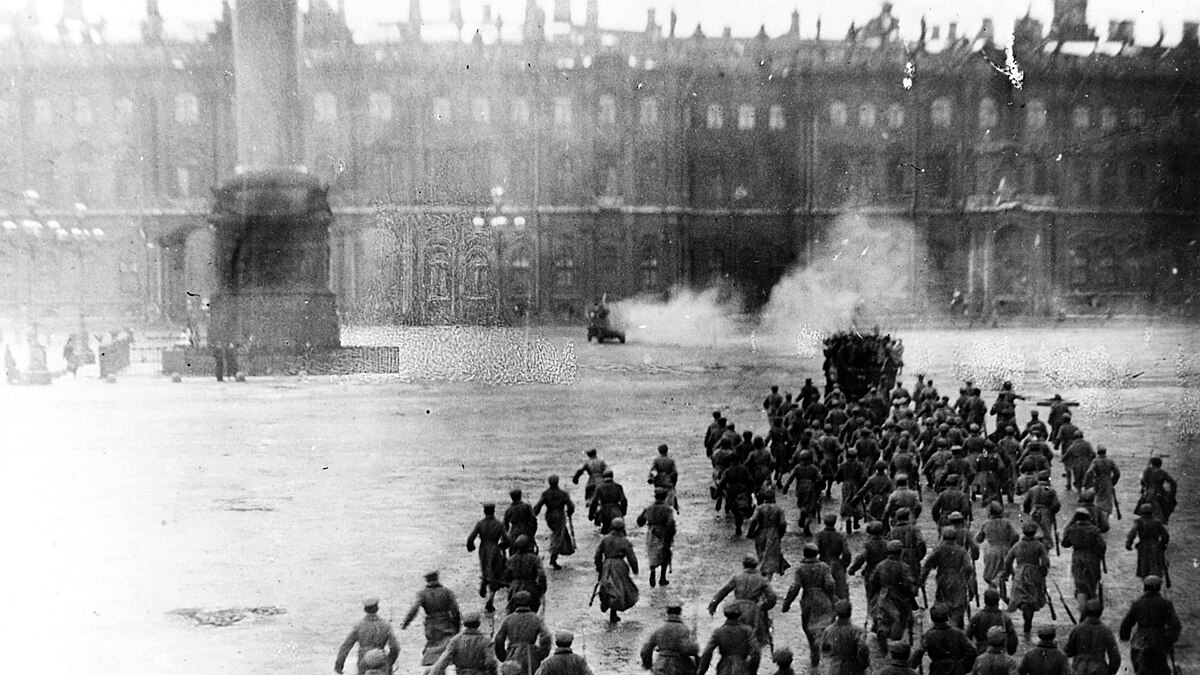Despite the Tsar being deposed, one of the main issues that the Russian People still had wasn’t resolved, they were still in the war. In order to concentrate the war onto one front, the Germans actively sent Lenin back on a train to Petrograd from Switzerland in order to start a revolution and get Russia out of the war.
With the Tsar gone, the Duma believed they should be in power, setting up a provisional government. However, the Soviets claimed that they were the government, setting up local establishments run by Mensheviks and the Social Revolutionaries, who would command the workers and soldiers. It was a delicate but fragile power balance. And Lenin was not a fan.
[There should be no] support for the Provisional Government; the utter falsity of all its promises should be made clear. [This government is] a government of capitalists, [and] should cease to be an imperialist government.
Lenin’s writings about the Government in his April Theses
Whilst many of their policies still left people starving and soldiers still fighting in the war, progress was slow and steady. The secret police was disbanded, a democracy was being established and the death penalty was abolished. However, Lenin thought this needed to change, promising the people everything that the Provisional Government wasn’t giving them, that being Peace, Land and Bread, and declared all power should be given to the Soviets. People began supporting his radical ideals and the Provisional Government began to panic. Instead of backing out of the war, they decided to launch the Kerensky Offensive, named after minister of war, Alexander Kerensky, believing that a victory would help support for the Provisional Government. This offensive was a massive failure and crashed the economy. The people, still starving with their husbands, sons and brothers dying out on the front, began to riot riots once more.

A group of armed protestors went out onto the streets and were subsequently shot by the Government soldiers. Lenin and the Soviets wanted to distance themselves from the violence. However, they marched under Soviet slogans and Kerensky, now the Prime Minister decided to use this to lock up the Soviets and accuse Lenin of being a German Agent, whereupon he fled to Finland in disguise.
The violence was eventually repressed by Kerensky but the workers were still supporting Communist ideals, which worried the liberals and factory owners. In order to help ease the tension, Kerensky appointed anti-Socialist General Kornilov to Supreme Commander of the Armed Forces. However, Kornilov hated the even slightly socialist policies of the Government so much that he grabbed his army and began to march on Petrograd. Panicking, Kerensky pulled Trotsky, who had defected to the Bolshevik cause, out of prison, armed them and told them to deal with Kornilov. It was a swift victory for Trotsky, by sabotaging railway and communications lines and convincing Kornilov’s men to desert. But when Kerensky asked for the guns back, Trotsky refused and Kerensky had now accidentally just armed the party that the working class were looking for. And due to the victory against Kornilov, party popularity sky rocketed.
They were eventually elected to the leader of the Soviets, allowing Lenin to return from Finland to enact his Communist Revolution. They were very loud about their uprising, alerting Kerensky who had Bolsheviks arrested. With their numbers rapidly dwindling due to being sent to prison, Lenin decided it was now or never. Trotsky got to work arming the Bolshevik Militias, who would storm government buildings, easily seizing control. They eventually seized control of most buildings in Petrograd and, as Kerensky ran out of the city, the Bolsheviks surrounded the Winter Palace.

Having finally come out of hiding, Lenin decided it was time to storm the palace. The guards gave up, and practically allowed Lenin and the Bolshevik Militia through, arresting the politicians inside. Lenin was now the leader of Russia, now called the Soviet Union. He decided to hold an election, the first of which he lost, called the other parties anti-Revolutionary, arrested their leaders and had no more elections after that. The Russian people began to suspect that Lenin was setting up a dictatorship.
On August 30, 1918, Lenin was speaking at a plant in Moscow. As he finished, he left the plant, when Fanny Kaplan fired 3 shots at him. Lenin survived and Kaplan was arrested and executed. This was not the first attempt on Lenin’s life, nor would it be the last. The newly established Bolshevik secret police ramped up their repression because of this. But, in the end, that was the Russian Revolution. It was not a great act of patriotism and bravery like in the United States. Nor was it a brutal, violent uprising like in France. Communist art may make you think that but ultimately, the Russian Revolution was one man with an idea, who wanted to depose a totalitarian rule and replace it with his own one, who simply did it by walking into buildings and asking what he wanted.

